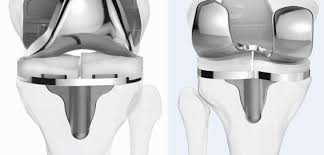Hip and knee preservation treatments aim to manage conditions affecting these joints in a way that preserves their function and delays or prevents the need for joint replacement surgery. These treatments are particularly beneficial for younger individuals or those with early-stage joint disease who want to maintain an active lifestyle and avoid the limitations associated with joint replacement surgery.

Physical Therapy and Exercise: Physical therapy plays a crucial role in hip and knee preservation by improving joint mobility, strength, and stability. Therapeutic exercises can help strengthen the muscles around the hip and knee joints, reduce pain and inflammation, and improve joint function. Physical therapists may also provide guidance on proper body mechanics and movement patterns to minimize stress on the joints during daily activities and sports.
Activity Modification: Modifying activities that aggravate hip or knee pain can help reduce symptoms and preserve joint health. This may involve avoiding high-impact activities or sports that place excessive stress on the joints, such as running or jumping, and focusing on low-impact exercises like swimming, cycling, or walking. Using assistive devices such as braces, orthotics, or walking aids may also help alleviate joint stress and improve mobility.
Weight Management: Maintaining a healthy weight is essential for hip and knee preservation, as excess weight can increase the load on the joints and exacerbate symptoms of joint pain and inflammation. Following a balanced diet and engaging in regular physical activity can help achieve and maintain a healthy weight, which in turn can reduce the risk of joint deterioration and delay the progression of joint disease.
Medications: Over-the-counter or prescription medications may be used to manage pain, inflammation, and other symptoms associated with hip and knee conditions. Nonsteroidal anti-inflammatory drugs (NSAIDs), such as ibuprofen or naproxen, can help reduce pain and inflammation. In some cases, corticosteroid injections may be recommended to provide temporary relief from joint pain and inflammation.
Biologic Treatments: Emerging biologic treatments, such as platelet-rich plasma (PRP) therapy and stem cell therapy, are being investigated as potential options for hip and knee preservation. These treatments involve using the body’s own cells or growth factors to promote tissue repair and regeneration in the joints. While research into the efficacy of these treatments is ongoing, they may offer a promising alternative for certain individuals with hip or knee conditions.
Surgical Interventions: In some cases, surgical interventions may be necessary to preserve hip and knee function and alleviate symptoms. However, these procedures are typically less invasive than joint replacement surgery and focus on preserving as much of the natural joint as possible. Surgical options may include arthroscopic procedures to repair damaged cartilage or soft tissues, osteotomy to realign the bones around the joint, or cartilage restoration techniques to stimulate the growth of new cartilage.


